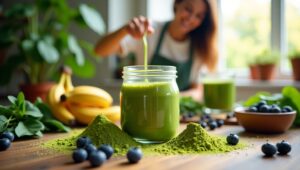Lentils vs. Quinoa: Lentils and quinoa are two nutrient-packed powerhouses that have become staples in many kitchens around the world. Both of these ingredients offer a range of health benefits and are valued for their versatility in various culinary applications. In this article, we will delve into the nutritional profiles of lentils and quinoa, comparing their key attributes to help you make informed choices for a well-rounded and healthy diet.
Table of Contents
ToggleLentils vs. Quinoa
Lentils: A Protein-Rich Legume:
Lentils, commonly categorized as legumes, are a significant source of plant-based protein. Packed with essential amino acids, lentils contribute to muscle development and repair. They are also rich in fiber, aiding in digestion and promoting a sense of fullness, making them an excellent choice for those looking to manage their weight.
In addition to their protein and fiber content, lentils are a great source of various vitamins and minerals, including iron, potassium, and folate. Lentils come in various colors, such as green, brown, red, and black, each offering a slightly different nutritional profile.
Quinoa: The Complete Protein Grain:
Quinoa, often referred to as a “superfood,” is a gluten-free grain that stands out for being a complete protein source. Unlike most plant-based foods, quinoa contains all nine essential amino acids, making it an ideal choice for individuals following vegetarian or vegan diets.
Quinoa is also rich in other nutrients, including fiber, magnesium, iron, and manganese. Its versatility in the kitchen allows it to be used in a variety of dishes, from salads to pilafs, adding a nutty flavor and a satisfying texture.
Nutritional Comparison:
Let’s break down the nutritional content of lentils and quinoa per one-cup cooked serving:

-
Lentils:
- Calories: 230
- Protein: 18 grams
- Fiber: 16 grams
- Iron: 37% of the recommended daily intake (RDI)
- Folate: 90% of the RDI
-
Quinoa:
- Calories: 222
- Protein: 8 grams
- Fiber: 5 grams
- Iron: 15% of the RDI
- Magnesium: 30% of the RDI
While lentils outshine quinoa in terms of protein and fiber content, quinoa takes the lead as a complete protein source and provides a unique set of minerals.
Incorporating Both Into Your Diet:
To reap the benefits of both lentils and quinoa, consider incorporating them into your meals in various ways. For example, you could create a hearty salad by combining cooked quinoa with lentils, mixed vegetables, and a flavorful dressing. This not only enhances the nutritional diversity of your diet but also offers a delicious and satisfying meal.
Conclusion: Lentils vs. Quinoa
In the lentils vs. quinoa nutritional face-off, both ingredients prove to be valuable additions to a balanced and healthy diet. Lentils shine with their high protein and fiber content, while quinoa stands out as a complete protein source. By including a variety of nutrient-dense foods in your meals, you can ensure that your body receives a broad spectrum of essential nutrients for optimal health. Whether you choose lentils, quinoa, or both, these versatile ingredients can play a crucial role in elevating the nutritional quality of your culinary creations.









